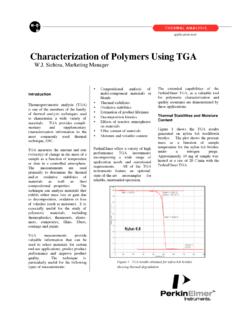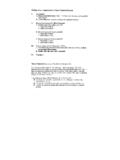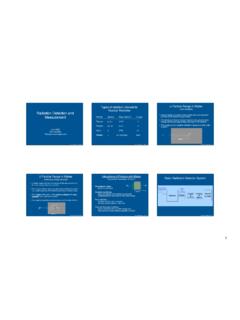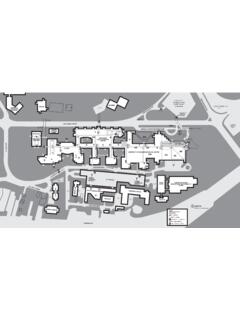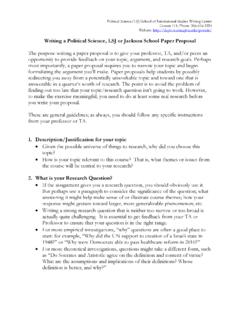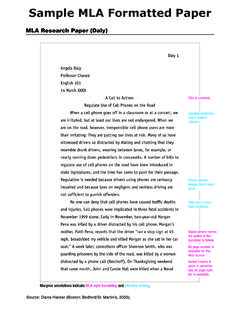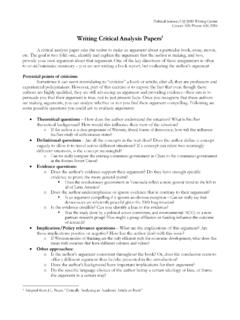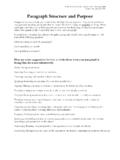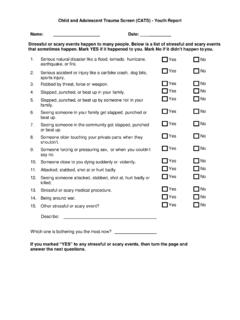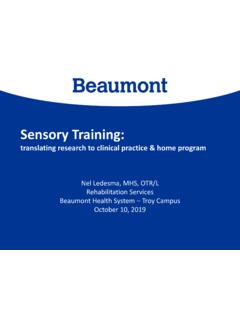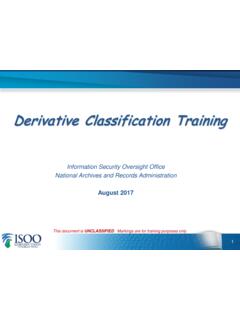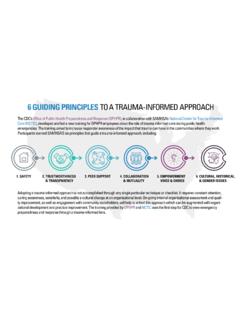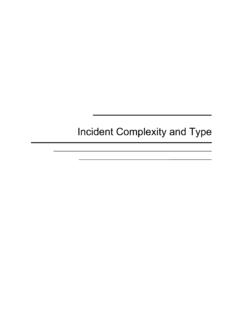Transcription of Training program costing example - University of Washington
1 Training program costing exampleMarcia Weaver, PhDResearch Associate ProfessorInstitute for Health Metrics and Evaluation (IHME)October 13, 2016 Learning objectivesFollowing this session, participants explain how five principles of cost analysis can be applied to a Training results of the cost-effectiveness analysis for the Integrated Infectious Disease Capacity-Building Evaluation (IDCAP) 1. PerspectivePerspectiveis the point of view from which the costs are calculated. It addresses the issue of which inputs or resources to include.
2 Training program budget for your organization Donor, which includes other partners they support Societal, which includes opportunity costsCost per unit5-day computer-based trainingplus 3-day workshop10-daytraining plus on-site visitsUnitsCostUnitsCostTrainer$100per day3$30010$1,000On-site$1,000 per site05$5,000[..] Training program budget$7,350$12,250 Training program budgetCost per unit5-day computer-based trainingplus 3-day workshop10-daytraining plus on-site visitsUnitsCostUnitsCostTraining program budget$7,350$12,250 Hotel contract$225per day3$67510$2,250 Donorcost$8,025$15,000 Donor perspectiveCost per unit5-day computer based trainingplus 3-day workshop10-daytraining plus on-site visitsUnitsCostUnitsCostTraining pro-gram budget$7,350$12,250 Contractwith venue$225 per day3$67510$2,250 Trainees time$20per day200$4,000275$5.
3 500 Totalcost$12,025$20,000 Societal perspectiveCost per unit5-day computer based trainingplus 3-day workshop10-daytraining plus on-site visitsUnitsCostUnitsCostTraining pro-gram budget$7,350$12,250 Contractwith venue$225 per day3$67510$2,250 Trainees time$20per day200$4,000275$5,500 Totalcost$12,025$20,000 Cost/trainee25$48125$800 Societal perspective2. Financial vs. economic costFinancial cost For goods and services that are traded on a competitive market, the opportunity cost is simply the pricewhereopportunity cost is the value of the most beneficial alternative use of the cost Value of goods and services that are not purchased such as volunteer time or for which the price is distorted3.
4 Output vs. cost per unit of output is valid when the two programs being compared are equally cost per unit of outcome can address differences in effectiveness across scope of the analysis is determined by the denominator. Only programs with a common denominator can be per unit of output5-day computer-based Training plus 3-day workshop10-day Training plus on-siteCost of transfer of learningTraining$12,025$20,000 Supervision$8,000$2,000 Total cost$20,025$22,000 Cost per unit of output5-day computer-based Training plus 3-day workshop10-day Training plus on-siteCost of transfer of learningTraining$12,025$20,000 Supervision$8,000$2,000 Total cost$20,025$22,000 Cost pertrainee$20,025/25= $801$22.
5 000/25 = $880 Cost per unit of intermediate outcome5-day computer-based Training plus 3-day workshop10-day Training plus on-siteCost of transfer of learningTraining$12,025$20,000 Supervision8,000$2,000 Total cost20,025$22,000 Trainees who meet standard1522 Cost per trainee who met standard$20,025/15 = $1,335$22,000/22= $1,000 Cost analysis: Compares the cost per unit of output when to programs are equally effective Cost-effectiveness analysis (CEA): Compares cost to effectiveness, Clinician who meets standard $/life years saved from intervention 4.
6 Incremental analysisIncremental cost effectiveness ratio (ICER) Change in health care cost Change in health outcomes ICER is a slopeHealth Care CostHealth outcomesHealthBenefitsPMTCT Cost/HIV infection avertedPre-trainingPost-trainingProgram costRemuneration$80,000$84,000 Supplies15,00018,000 Capital5,00010,000 Total Cost$100,000$112,000 Numberof mother-infant pairs1,0001,200 Base case-vertical transmission25%25%Number of HIV infections averted1,000*.25*.63=1581,200*.25*.63=18 9 Incremental cost$112,000 -$100,000 = $12,000 Incremental effectiveness189 158 = 31 ICER$12,000/31 = $3814.
7 Incremental analysisEffects: HIV infections avertedHealth Care Cost189158$100,000$112,000 ICER5. sensitivity analysis Calculation of alternative cost-effectiveness results when there is uncertainty about one or more parameters. It shows the extent to which uncertainty about a parameter would substantially affect the CEA with uncertaintyPre-trainingPost-trainingTota l Cost$100,000$112,000 Numberof mother-infant pairs1,0001,200 Base case-vertical transmission25%25%Lower bound19%19%Upperbound30%30%Incremental cost$112,000 -$100,000 = $12,000 ICER basecase$12,000/31 = $381 Lower bound$12,000/24 = $501 Upper bound$12,000/38 = $3171.
8 Perspective2. Financial vs. economic cost3. Output vs. outcome4. Incremental analysis5. sensitivity analysisSummary 5 principles Develop an Integrated Management of Infectious Disease (IMID) curriculum for midlevel practitioners Complement the Training program with On-Site Support (OSS) Measure their effect on the quality of care and health outcomes Estimate the cost-effectiveness of the interventionsAim: Create &evaluate an innovative capacity-building programPhoto by Charles Steinberg, MDIntegrated Management of Infectious Disease (IMID) WHO curricula such as IMCI, ETAT, and IMAI Advances in health professional education (Miceli, et al.)
9 IJID 2012) HIV, TB, malaria, and pneumoniaOn-Site Support (OSS) Mobile Team Medical officer Clinical Officer Laboratory Technologist District contact person/nurse officerMixed Design With Pre/Post and Cluster Randomized Trial ComponentsARM BIMIDOSSARM AIMIDOSSTime 0 Time 1 Time 2Bi-monthly OSS23 Facility performance indicators spanned seven areas Emergency triage, assessment and treatment (ETAT) Case management of fever HIV prevention HIV Care ART Respiratory illness TB/HIVE xample of results: Percentage of outpatients triagedTime 0: Arm A Time 0: Arm B% of Outpatients Triaged RR (CI)ArmATime 1 Time ( , )*ArmBTime 1 Time ( , )*ArmA vs.
10 Arm B:Time 1 Time ( , )OSS significantly increased the %of outpatients triagedAnalysis for 23 indicators showed impact on 6 indicators Outpatients triaged Emergency & priority patients admitted, detained or referred Malaria suspects received appropriate treatment Smear negative malaria suspects treated w/ anti-malarials U5 pneumonia suspects assessed for pneumonia HIV infected patients enrolled in careCost Analysis Intervention Curriculum Development IMID On-site SupportTreatment Drugs Preliminary cost analysis in $USIMID + OSS(Arm A)IMID(Arm B)
